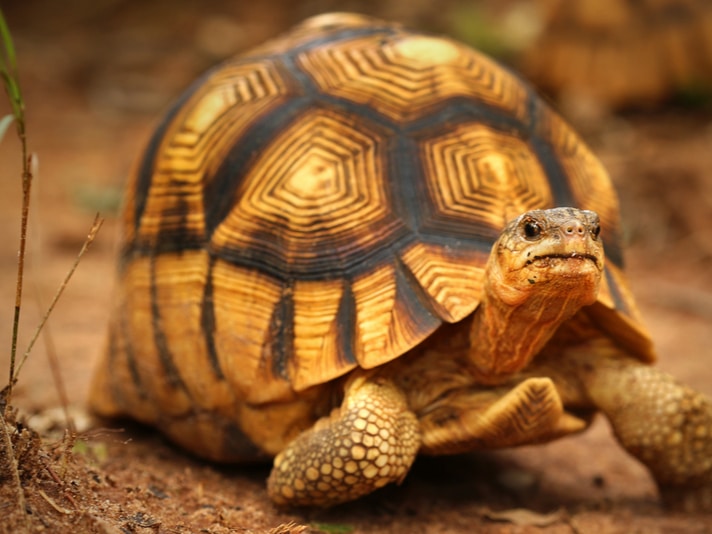Did you ever wonder what the top 10 reptiles and amphibians that are most reliant on zoos and aquariums for their survival on Earth? The British and I
Did you ever wonder what the top 10 reptiles and amphibians that are most reliant on zoos and aquariums for their survival on Earth? The British and Irish Association of Zoos and Aquariums (BIAZA) has published its own list of the herps that would probably be gone without the assistance of breeding programs for these animals. While some of these animals are being bred elsewhere around the world, the animals on this list are benefiting from conservation efforts by zoos in the United Kingdom and Ireland.
Read More
The Plight of The Mountain Chicken Frog
Poison Frogs of the Genus Mantella
Thai Smugglers Captured With An Estimated 14 Percent Of Ploughshare Tortoises Population
''Last year, BIAZA published a report of the top 10 mammals most reliant on zoos, which highlighted the work being done by zoos to help safeguard their future,” said Dr. Andrew Marshall, of BIAZA's field programmes committee.
''This year, we have focused on 10 prevailing examples of reptiles and amphibians that zoos are working to save from extinction. The list includes some fantastic species, many of which are facing a dramatic decline and are in a desperate situation in the wild."
BIAZA's top 10 reptiles and amphibians most reliant on zoos and their IUCN Red List classification
Axolotl – (Ambystoma mexicanum) IUCN Red List: Critically Endangered
From central Mexico’s Lake Xochimilco and surrounding wetlands, the Axolotl is a critically endangered amphibian that retains the look of a large tadpole. It is also known for its capability to regenerate limbs. The axolotl lives its entire life in water and thankfully are easily bred in captivity.
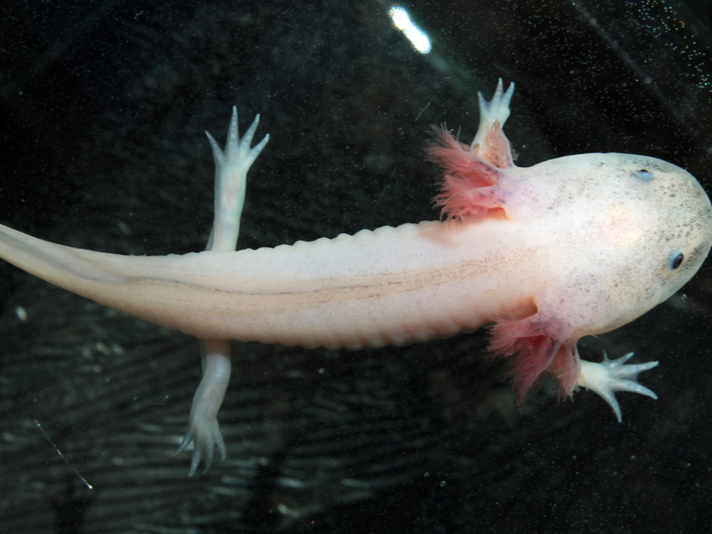
Kazakov Maksim/Shutterstock
The Axolotl is a critically endangered amphibian that retains the look of a large tadpole.
Golden mantella (Mantella aurantiaca)- IUCN Red List: Critically Endangered
The golden mantella is a bright yellow poison frog from Madagascar that lays its eggs on land under leafy litter near pools of water. The male of the species doesn’t croak to attract mates but rather emits a series of clicks to attract a female.
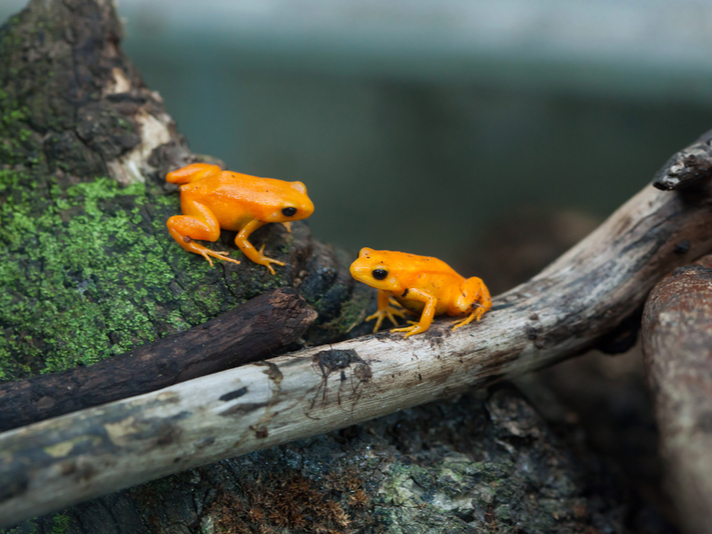
Vladimir Wrangel/Shutterstock
The golden mantella is a bright yellow poison frog from Madagascar.
Komodo dragon – (Varanus komodoensis)-IUCN Red List: Vulnerable
The Komodo dragon is the largest lizard in the world and can be found only on the island of Komodo in Indonesia. They can grow up to 9 feet in length and weigh more than 200 pounds. It is estimated that there are less than 4,000 Komodo dragons left in the wild, and of those 4,000, 1,000 are females of reproductive age.
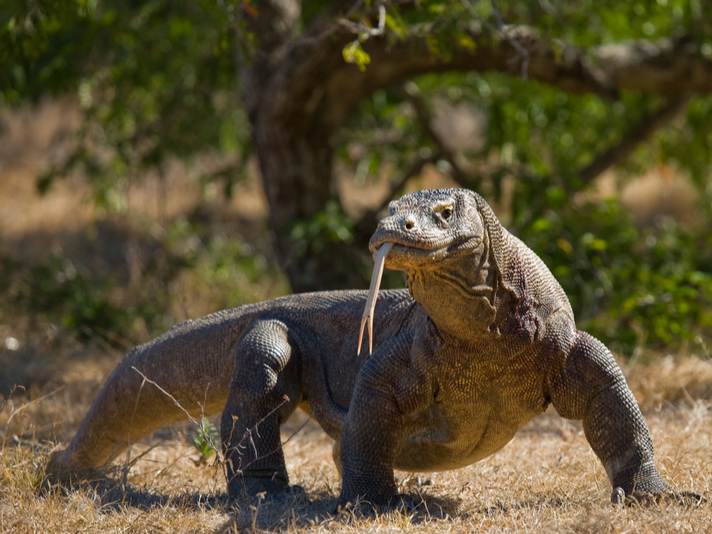
GUDKOV ANDREY/Shutterstock
The Komodo dragon is the largest lizard in the world. It is native to Indonesia.
Lemur leaf frog – (Agalychnis lemur)-IUCN Red List: Critically Endangered
Found in Colombia, Costa Rica, and Panama, the Lemur leaf frog is a small frog at just 1.2 to 1.6 inches in length. According to BIAZA, its range and population has shrunk by 80 percent in the last several years. It is known for its unique camouflage capabilities. It remains bright green to resemble the leaves it stays on during the day when it is inactive but turns brown at night when it is most active.
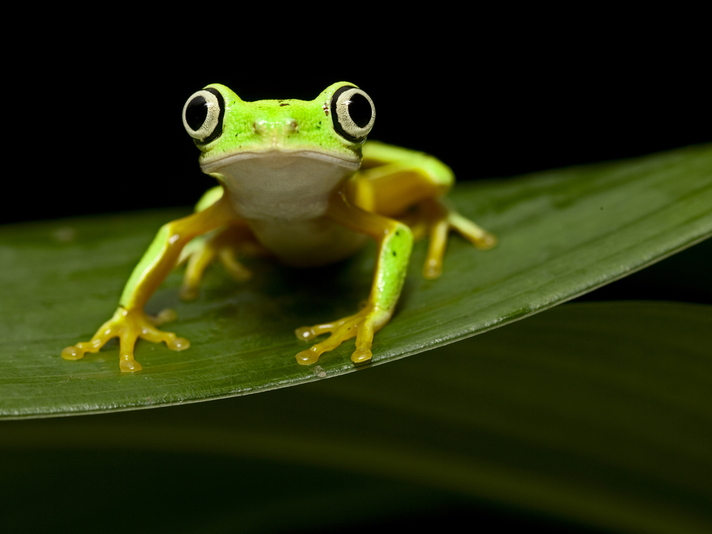
Dirk Ercken/Shutterstock
The Lemur leaf frog is a small frog at just 1.2 to 1.6 inches in length.
Morelet's leaf frog – (Agalychnis moreletii)-IUCN Red List: Critically Endangered
Hailing from southern Mexico into Guatemala, Belize, El Salvador, and Honduras, the Morelet’s leaf frog has seen rapid declines in its population numbers in the wild due largely to habitat loss, the chytrid fungus, and some collection for the pet trade. Not a prolific breeder, this frog deposits less than 100 eggs on vegetation near ponds and pools. It shares its spawning pool with the red eyed tree frog (Agalychnis callidryas).
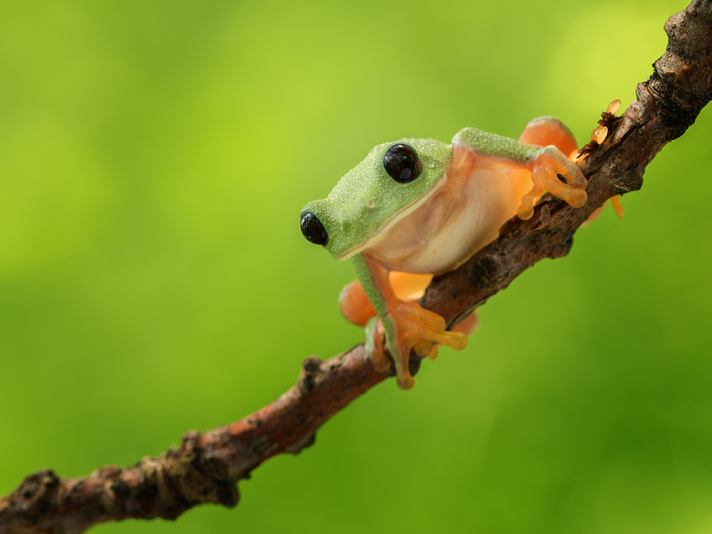
Peter Reijners/Shutterstock
The Morelet's leaf frog is not a prolific breeder.
Mountain chicken frog – (Leptodactylus fallax)-IUCN Red List: Critically Endangered
The mountain chicken frog gets its name for tasting like chicken in the Lesser Antilles Caribbean (Montserrat and Dominica) from which it comes from. Adult mountain chicken frogs can weigh close to 2.5 pounds. Unlike most other frogs, the mountain chicken frog breeds in burrows. It has suffered 80 percent declines since 1995 due to hunting for food, habitat loss, natural disasters and the ravages of the chytrid fungus.
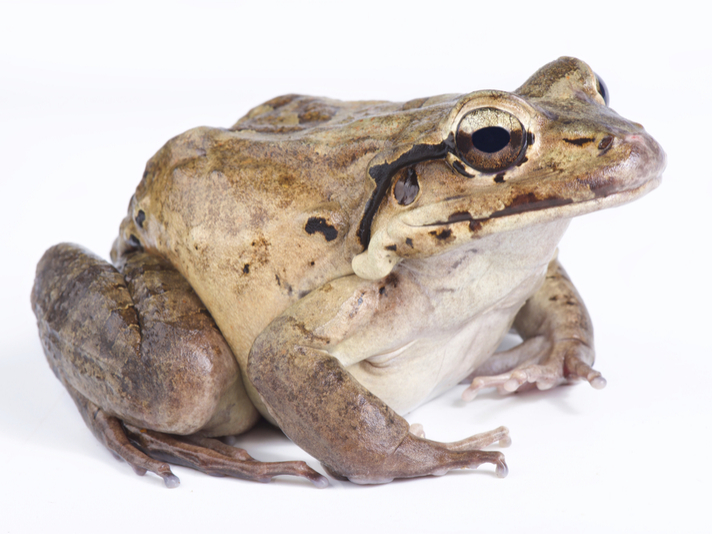
reptiles4all/Shutterstock
The mountain chicken frog is known for its food value.
Orange-tailed skink – (Gongylomorphus cf. fontenayi) IUCN Red List: TBD
The orange-tailed skink lays a clutch of just two eggs, six times a year. It spends most of its time in leaf litter, looking for fruit to eat. Found only on Flat Island in Mauritius, the little lizard was the victim of predation by the Indian musk shrew, an introduced species. Durrell Wildlife Conservation Trust brought 500 of the skinks to a nearby island that is free of the shrew or tourists, and 22 wild caught skinks are in a zoo in Jersey, England as part of a captive breeding population.
The orange-tailed skink was discovered in 1995 and has not yet been fully described. It does not yet have a scientific name. Scientific American reports that it has a temporary name, Gonglyomorphus c.f. fontenayi, due to its close resemblance to the Macchabe skink (G. fontenayi).
Ploughshare tortoise (Astrochelys yniphora)-IUCN Red List: Critically Endangered
The ploughshare tortoise is the most threatened tortoise species in the world and hails from Madagascar. It is estimated that just 400 breeding adults are left in the wild. They reach maturity at 20 years of age and can live to more than 100 years. Ploughshare tortoises are the victims of the illegal pet trade and hunting, and have suffered due to habitat loss, the introduction of bush pigs, fires, and mining and forestry.
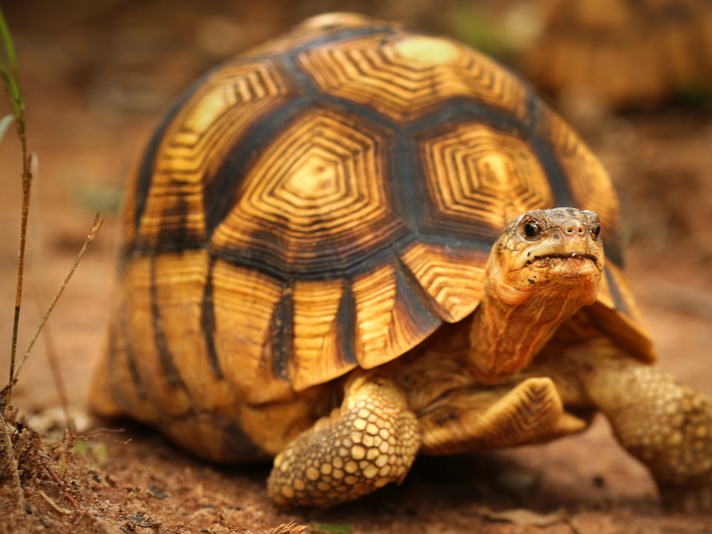
ryan m. bolton/shutterstock
The ploughshare tortoise is the most threatened tortoise species in the world and hails from Madagascar.
Round Island boa (Casarea dussumieri)-IUCN Red List: Endangered
The round island boa is from Mauritius and is one of the few snakes that can change its color as part of its camouflage capabilities. During the day the snake is a dark brown. At night it turns gray with black patterning. It feeds exclusively on other reptiles, including, geckos and skinks. The population was estimated to be as low as 250 animals in the wild in the early 1990s. The Durrell Wildlife Conservation Trust initiated a the Mauritius Reptile Recovery Programme, a captive breeding and translocation program and the numbers have gone up, to an estimated 1,000 individuals in the wild.
Sand lizard – (Lacerta agilis)-IUCN Red List: Least Concern
The sand lizard is a rare species in the United Kingdom that has suffered from habitat loss and fragmentation. The Chester Zoo began breeding the lizard in 1995 and released hundreds of captive bred offspring in 2000 at 12 release sites.
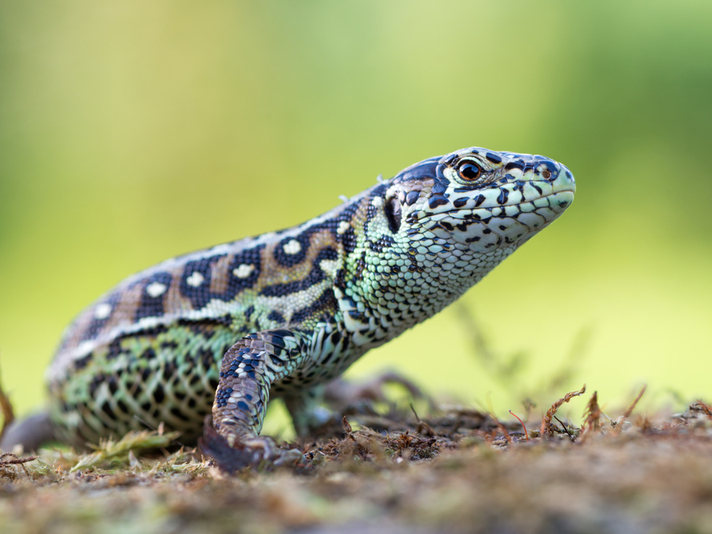
Marek R. Swadzba/Shutterstock
The Chester Zoo began breeding the lizard in 1995 and released hundreds of captive bred offspring in 2000 at 12 release sites.
The full report can be read on the BIAZA website.
John B. Virata keeps a ball python, two corn snakes, a king snake, and two leopard geckos. His first snake, a California kingsnake, was purchased at the Pet Place in Westminster, CA for $5. Follow him on Twitter @johnvirata

